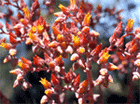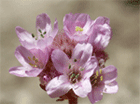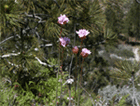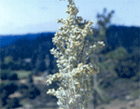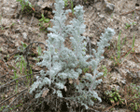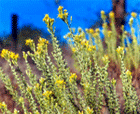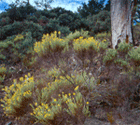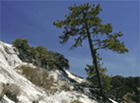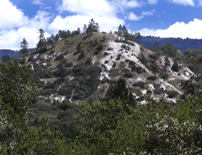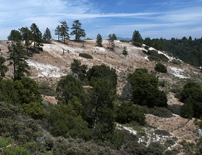The Santa Cruz Sandhills contain populations of several plant species which are located far from the species primary distribution. Several plant species in the Sandhills are more commonly found in the coastal beach and strand communities, which are 7-10 miles or more from Sandhills habitat. There is no doubt that their adaptations to sandy soil allow these species to inhabit the Sandhills.
But what about the Sandhills populations of plants primarily found within the inland mountains of California, including the Sierra Nevada and Cascade ranges? Ponderosa pine and pussy paws are typically found well-inland and at elevations exceeding 3,000 feet, whereas Sandhills populations occur at elevations between 300 and 1500 feet within just a few miles of the ocean.
Unique morphological characteristics of disjunct Sandhills populations suggest that some may be on separate evolutionary trajectories due to the unique environmental conditions of the Sandhills and their geographic isolation from other populations. Over long time periods, these disjunct populations may become new species endemic to the Sandhills.
